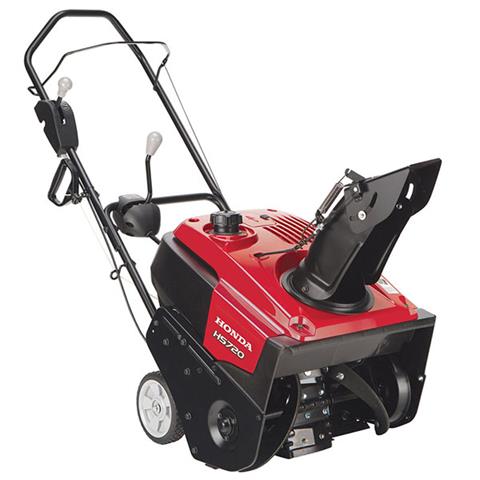Choosing the right snowblower is crucial if you live in a part of the country that receives heavy snowfall. There are three different stages of snowblowers for you to choose from, each suited to handling a different type of landscape and amount of snow. Learn what each has to offer to make the best choice for your needs.
What Are the Three Stages of a Snow Blower?
Nowadays, though, there are a variety of snow blowers available to potential buyers. There are electric and track-drive snow blowers. There are also “stage snow blowers.” The stage ones are usually identified by the number of stages that it takes to eliminate snow, which include breaking up the snow, collecting it, and throwing it out of a chute. There is:
-
The Single-Stage Snow Blower
-
The Two-Stage Snow Blower
-
The Three-Stage Snow Blower
What Is the Difference in Stages of Snowblowers?
The name of each snow blowers reflects the amount of steps it takes to clear the snow. The stages also refers to the number of augers in the snow blower. An auger is a mechanical tool that has a helical (or spiral) shaft, which bores holes in terrain and breaks up snow. The auger can be seen at the front of the blower.
The difference in stages are decided by a myriad of factors. These factors include the machine’s weight and size, maintenance requirements, mechanics, speed, range, and how much snowfall that the snow blower can clear.

Single-Stage Snow Blower
A single-stage blower moves snow in a single step. A single auger breaks up the snow, scoops it up, and directs the snow through its chute. When this auger contacts the surface, it pulls the snow blower forward.
For this reason, a single-stage snow blowers are ideal to use on mid-sized, paved surfaces with a snowfall of 8 inches or less. A small suburban driveway is a good example. Using it on unpaved surfaces or in areas where there is a lot of snowfall may result in gathering gravel, breaking the machine, or damaging your driveway. However, it is accessible, lightweight, small, and easy to handle.
Two-Stage Snow Blower
A two-stage snow blower completes a snow removal job in two steps. First, the augers break up the snow and scoops up the snow and ice. Then, the machine directs it into a bucket, where a high-speed propeller takes it from the machine, and throws it out the discharge chute—sometimes reaching as far as 50 feet. The second stage helps to prevent the machine from clogging the bucket, which keeps the machine functional.
The first stage breaks up the snow and directs it to the second stage where the snow is thrown.
With the single-stage, the two-stage snow blower can handle snowfall of more than eight inches. Additionally, because its wheels are often engine-powered, and its auger doesn’t touch the ground, two-stage blowers are ideal for expansive, but uneven or unpaved terrain as well as paved paths. One may use this to blow where there are large snow pile-ups, such as around a mailbox or at the end of a driveway.
Three-Stage Snow Blower
A third-stage snow blower uses two augers and finishes its job in three steps. Similar to the two-stage blower, the three-stage breaks up the snow and collects it. Then when the snow reaches the unit’s center, an accelerator chops and pushes the snow through the impeller before launching it out of the discharge. However, there is only one company that makes three-stage blowers, which can make them expensive and hard to find.
Three-stage blowers can clear up to 23 inches of snow. They’re often sought to clear snow in wet and heavy areas with deep snowfall. They can work on an incline and are perfect for wide paved or unpaved areas. Its accelerator can move up to 10 times faster than the accelerator in a two-step and can clear snow faster. At the same time, it’s heavier, more expensive, and less maneuverable than smaller blowers.
How to Decide Between a 2-Stage vs 3-Stage Snow Blower
A two-stage and three-stage snow blower may seem similar. After all, they are popular among buyers, especially those in rural areas with high snow-fall. They also both include more than one auger and an accelerator that will shoot the snow away. This can make deciding between a two-stage and third-stage snow blower a challenge.
One factor to consider when buying a blower is the amount of maintenance you can expect to perform on it. A third-stage blower includes an accelerator that makes it easy to use. This machine also requires time-consuming and expensive maintenance. On the other hand, a two-stage may be easier to maintain, but less successful in deeper snow.
The important aspect to remember is to consider your environment. Determine whether you will use the snow blower in uneven terrain or whether your area may have a high snowfall to warrant a three-stage blower. You may discover that a two-stage blower will suffice.
Regardless, compared to a hand shovel, using any snow blower would be advantageous in the winter. By using one, you can eliminate the extra work of trudging through winter chores and tough weather, and ultimately give yourself more time to stay inside and enjoy the warmth.
 Mike Kunert is the general manager of Powersports Company. He is very passionate about the powersports and outdoor equipment industry. He does everything from sales to service at the store. With 23+ years in the powersports/outdoor equipment industry and many OEM factory certifications, he has a lot of knowledge about the industry.
Mike Kunert is the general manager of Powersports Company. He is very passionate about the powersports and outdoor equipment industry. He does everything from sales to service at the store. With 23+ years in the powersports/outdoor equipment industry and many OEM factory certifications, he has a lot of knowledge about the industry.